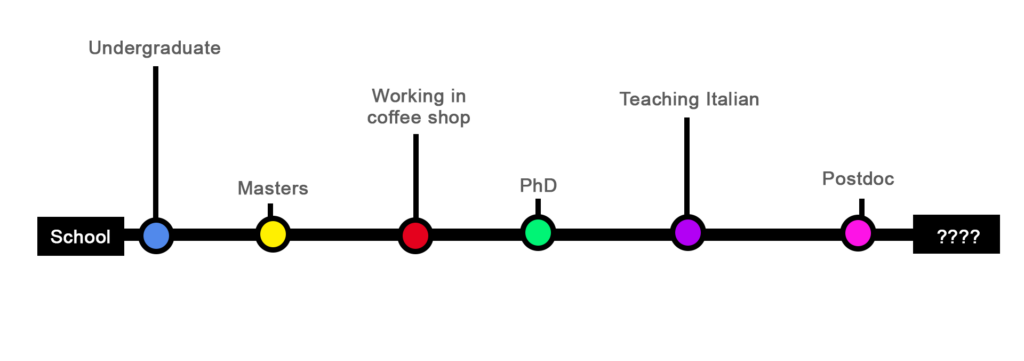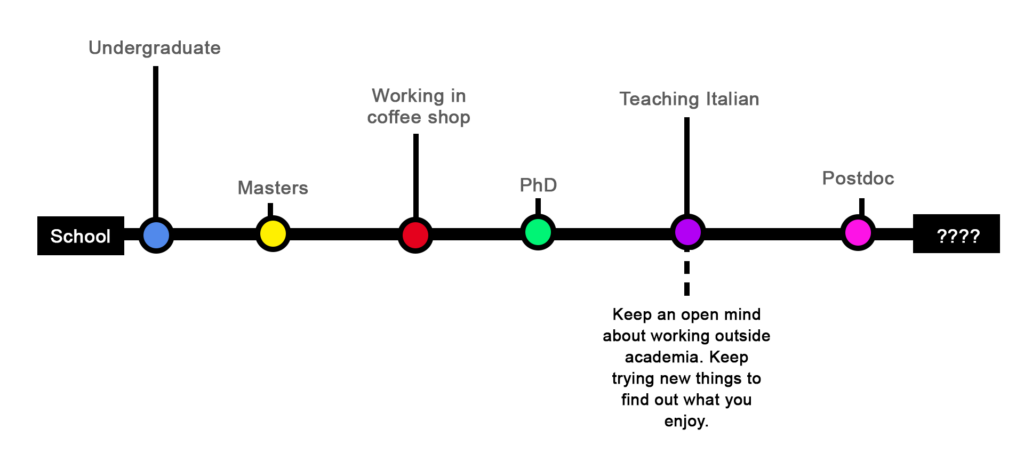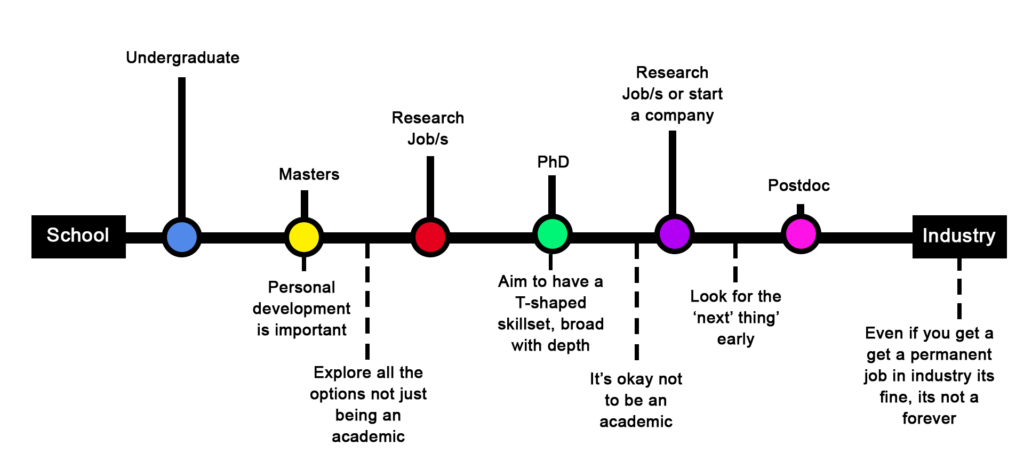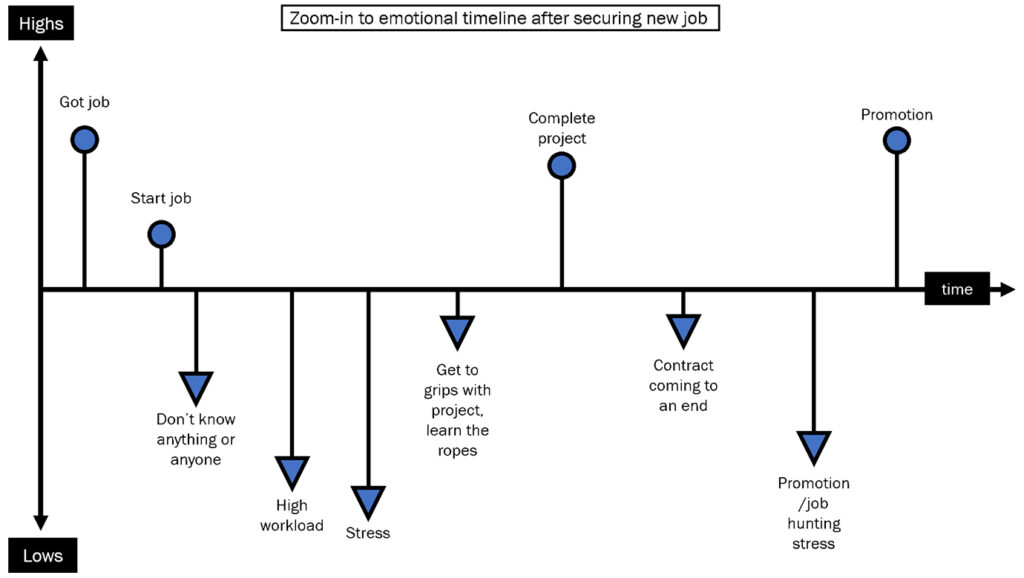Career Timelines
The aim of a career timeline, adapting McAlpine’s approach, 2018, is to chart the milestones and major points in your career so far.
Charting both the organisational roles and the emotional highs and lows. Reflecting on these factors will help you to determine what has influenced your career choices so far, and what matters most to you in your future decision-making.
- What has influenced your career decision making in the past
- What matters most in future decision-making
How to use
Step 1: List the milestones or major points in your career so far on a chronological timeline
Download a blank timeline template to plot your own timeline.

Step 2: Consider each point and, knowing what you know now, what advice would you give to your former self?

Moving from academia to industry
During a one-day workshop, with former postdocs who now work in research in an industrial setting at IBM, we asked them to construct career timelines to capture their move from academia to industry.
This example career timeline summarises the main themes and advice identified by the group:

Advice provided by former postdocs:
- Self-development: Engage in personal development and take opportunities to improve your skill set (in order to have breadth and depth).
- Timely exploration: Consider the next career move as early as possible (i.e. not waiting until the end of a contract to start thinking about next steps).
- Reassurance about challenging norms and stereotypes: Challenge your norms of success! Consider all the careers open to you, within and beyond academia. Bear in mind that your next role is unlikely to be your last and you will continue along a career path.
Suggested task
Login or register to add these tasks to your personal development plan.
Step 3: Create an emotional timeline charting the significant emotional moments: the highs and lows you experienced at different points
The Atlas of Emotions is a useful interactive tool for identifying the range and intensity of emotions.

Download: blank emotional high/low chart
The first few months
We asked the group of postdocs who had moved to industry, mentioned in the previous example, to chart their emotions after they had moved into their non-academic roles.
For the first few months after starting their new jobs, most of them experienced a rollercoaster of excitement and anxiety:

Why does this work?
“[Making a transition] is not a hard and fast line where you move beyond academia and that feels straight away fine and comfortable, and this is absolutely normal.”
Dr Al Mathers Former postdoc, Head of Research at Good Things Foundation
For many people, career transition is an emotional journey that does not end when you get a new job. As with starting any new job in any working environment, feeling like you don’t know what you are doing, and that you don’t belong is normal.
By reviewing your own previous emotional highs and lows in relation to your career milestones, you can build confidence in your ability to overcome and cope with the period of uncertainty that career transition often brings.
Suggested tasks
Login or register to add these tasks to your personal development plan.


 31
minutes :
31
minutes : 






 Refine
Refine

